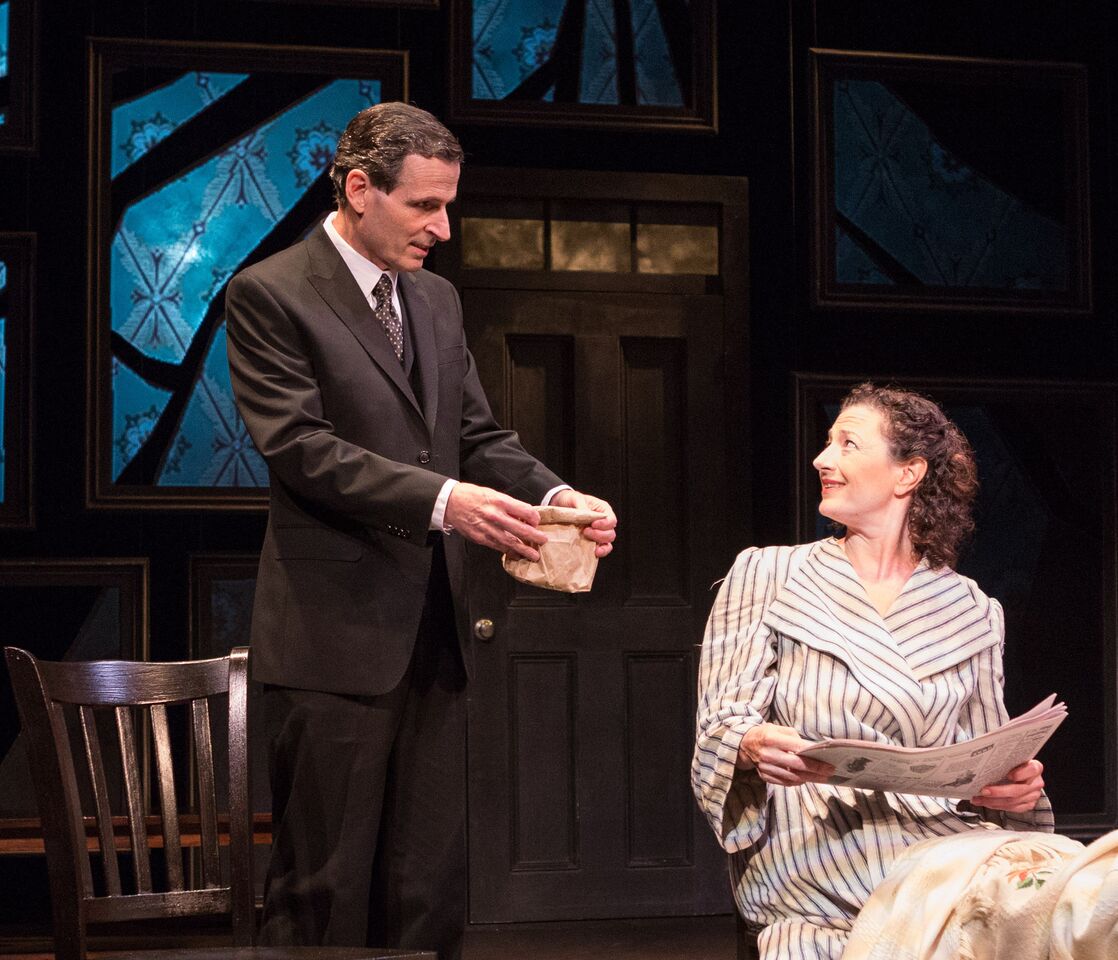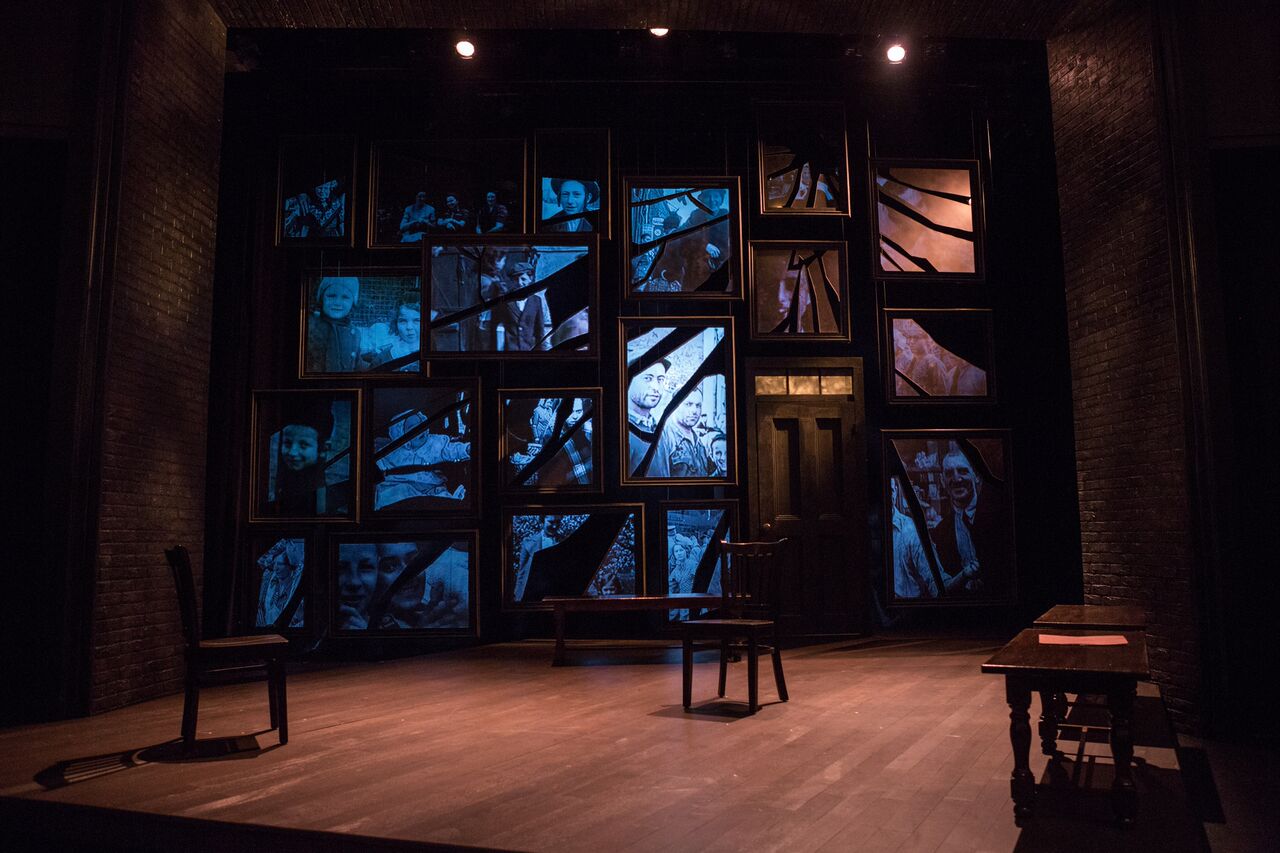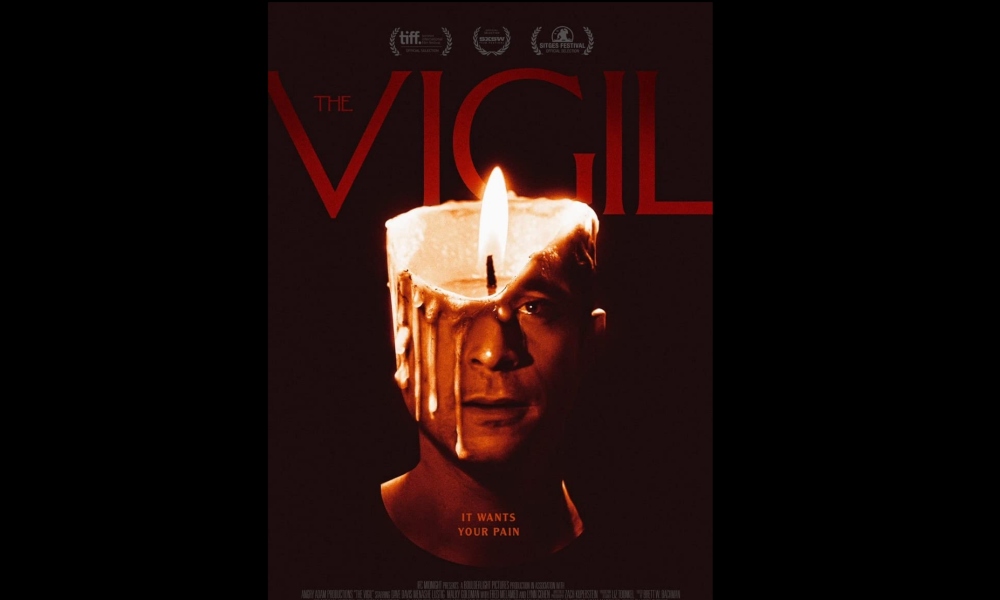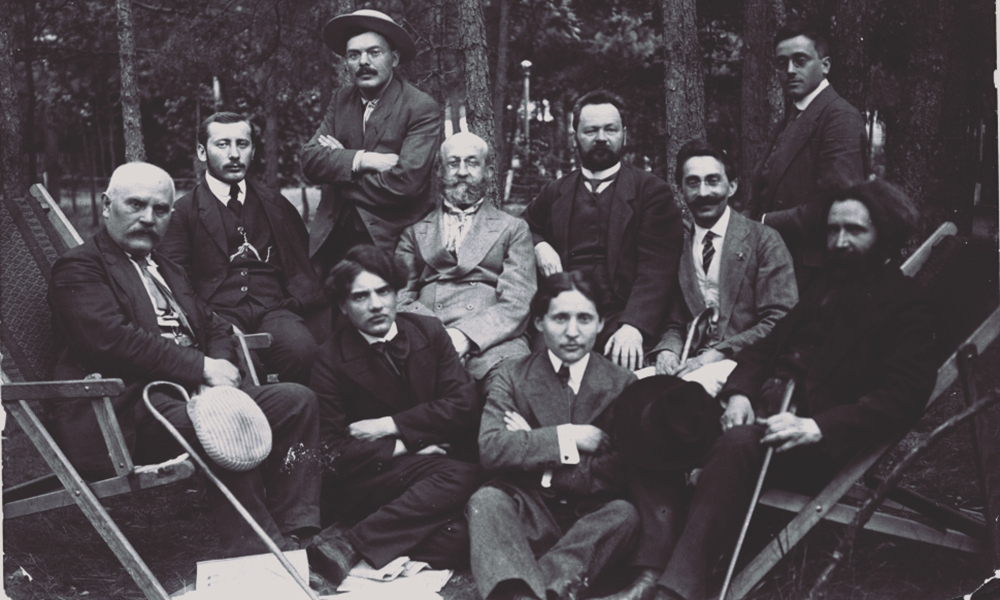Though a broken mirror foretells seven years of bad luck, Theater J’s production of Arthur Miller’s Broken Glass foreshadows nothing but promise from the riveting cast exquisitely directed by Aaron Posner. Miller’s lesser-known play sparkles like suspended shards of crystal on the Theater J stage.
Set in Brooklyn in 1938, the play follows the building tension in a marriage close to fracture, while Kristallnacht (the night of broken glass) rages across Germany and in the news. Images of old Jewish men cleaning German sidewalks with their toothbrushes find their way to Brooklyn, New York where Sylvia lives with her husband of 20 years, Phillip Gellberg, who will be the first to tell you, “It’s Gellberg, not Goldberg.”
Lise Bruneau, who plays Sylvia, beautifully captures the boiling resentment of a Jewish woman trapped in a marriage where she is uncared for as a woman, in a world that seemingly does not care for Jews. Sylvia’s hysteria over the events of Kristallnacht and her increasing discomfort toward her own husband confines her to a chair in what Dr. Harry Hyman, played by Gregory Linington, describes as a mental paralysis. Bruneau’s quiet struggles throughout the play only act to emphasize her emotional outbursts, and for a performance confined to a chair, she radiates physical resilience.

The play unfolds as an episodic game of he-said-she-said as Phillip tries to decipher what is wrong with Sylvia, and as Sylvia struggles to tell Phillip that she is terrified of his self-hatred, without either ever confronting the other. The go-between for Sylvia and Harry is Dr. Hyman. Linington’s Dr. Hyman is a somewhat-charming, somewhat-manipulative do-gooder who doesn’t always do-good but can’t be caught for lack of trying. Dr. Hyman aims to cure Sylvia and launches a full-scale investigation into the Gellbergs’ marriage that may have caused Sylvia’s current state. Alongside his effervescent young wife Margaret, played by Kimberly Gilbert, the dynamic duo add a real sense of playfulness to a play about anything but games.
Even though they only have several scenes together throughout the entirety of the play, the chemistry between Sylvia and Phillip, played by Paul Morella, is heart-shattering. Morella deftly maneuvers Phillip’s many contradictions, straddling the line of hypocrisy and human emotion, creating a truly complex and profound performance. Both a proud but self-loathing man, both a Jew and an anti-Semite, Morella’s Phillip evolves and devolves throughout the course of the play, like putty in the audience’s hand. From Phillip’s stammering nervousness to apoplectic bouts of rage and sorrow, Morella carries the tempo of the play with the taping of his fingers on his hat rim.
Adding an outside perspective to a somewhat confined relationship, Phillip’s boss, Stanton Case, played by Stephen Patrick Martin, embodies the WASP dreams Phillip can never accomplish. Sylvia’s spunky sister Harriet, played by Michele Osherow, gives insight into Sylvia and Phillip’s past.
And throughout it all, Sylvia’s siren song rings true. Like an unwanted Cassandra, who loses her legs instead of her eyes, Sylvia warns of the oncoming horrors of the Holocaust, attributing her paralysis both to her unhappy marriage and the atrocities in Germany that are, in the heat of the play, one in the same.

Underneath the splintered glass of a dozen large photo frame projectors, the cast tiptoes around the truth like broken shards, punctuated by the cello music of Udi Bar-David between scene changes, creating a beautiful, brutal ballet. In the fractured frames, projection designer Mark Costello works with set designer Andrew Cohen’s minimalist wood chair set to beam newspaper stories of Kristallnacht out into the audience, with collaboration from the United States Holocaust Memorial Museum.
The projectors, at times imaging the sets’ interior (bookshelves violently cut in thirds by floral wall-paper), at times imaging Sylvia’s own internal chaotic thoughts (naked skin brushing against wet lips) and at times imaging the gruesome events of Kristallnacht, create a seventh character in this six-role drama.
Lighting and sound design by Harold F. Burgess II and Justin Schmitz add golden dimension to the production like opening an old newspaper. And special notice should be given to costume designer Tyler Gunther, who uses the Holocaust symbol of the gray-striped pajamas to embody in both Sylvia and Phillip the crux of Sylvia’s hysteria: the genocide of European Jews.
Beautiful tableaus, evocative imagery and fine acting make this production of Broken Glass as complicated as putting the shards back together.
Broken Glass plays through July 16, 2017 at Theater J—the Edlavitch DCJCC’s Aaron & Cecile Goldman Theater—at 1529 16th Street, NW, in Washington, DC.














I wish I were there to see this play. Great review!